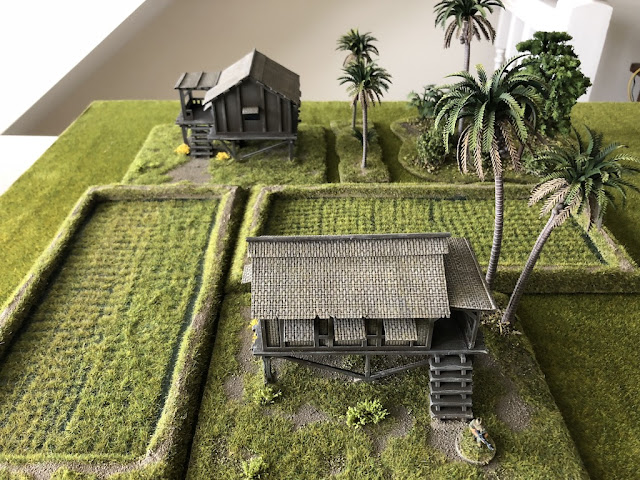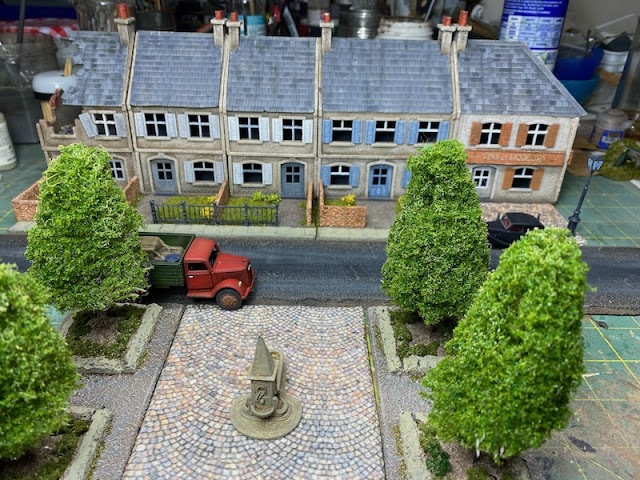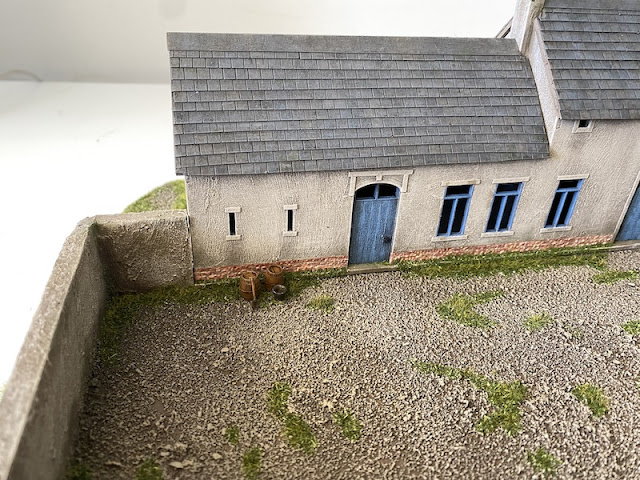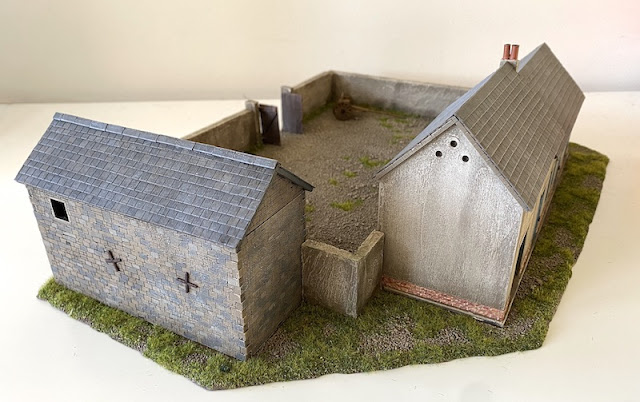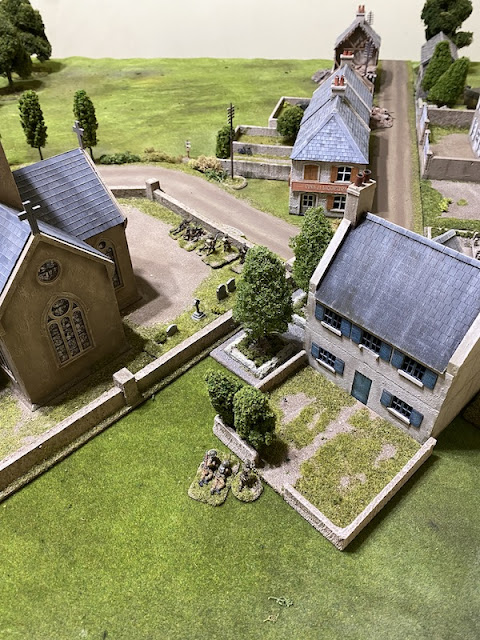As a miniature gamer I've always loved the look of a table filled with great terrain, who doesn't? Over time I've focussed more and more on trying to create tables where the terrain looks seamless to the eye.
I think the key is to focus on how the individual terrain pieces blend in with the table surface regardless of whether it's a textured board, a game mat or whatever other material you choose to use. When I first returned to miniature gaming I was placing the finished model directly onto a printed game mat. It wasn't a disaster but to my eyes this always looks like the model wasn't part of the landscape, it was just sitting on top of it.
The most obvious solution is to attach the building to a base and dress it with terrain. Some of my first attempts were simple and straightforward, like this 20mm barn from Charlie Foxtrot Models.
For these 20mm village houses for the Far East from Sarissa Precision I went for something a little larger and more elaborate.
Sometimes I've been inclined to take things a step further. I had built a small workshop from Charlie Foxtrot Models and this worked well as a general industrial/agricultural building. However, as you can see below, without a base to integrate it into the ground it tends to look detached from its environment.
This led to a quite radical transformation that involved turning it into a French garage mounted on a base and with lots of added elements to make a more evocative piece (you can follow this build in more detail in this post).
Yet it doesn't have to be that complex. I think the greenhouse project below shows what a difference a relatively small base can make. While I was writing up an AAR for one of the Chain of Command campaigns every time the greenhouse appeared in one of the pictures I couldn't help but notice how bare it looked.
Using odds and ends of spare terrain and scratch building with balsa wood I made up a simple interior on a textured base of MDF to bring it to life.
This type of basing works well, but it can restrict how versatile you can be with the buildings in different settings. One alternative is to make modular bases where the buildings are not attached permanently. I settled on this technique when creating front and backyards for houses in European villages. Where as French villages are often characterised by house fronts lining the street Dutch villages often feature front yards. To be able to make up both using the same buildings meant a more modular approach offered a solution.
Bases were made that could accomodate various combinations of model buildings.
This allows me to join them together without doubling on the fence lines, like so:
The base with all four sides fenced can then butt up against the open end to make a row of three houses. As part of the same project I created several individual pieces of fence that can be used to close off one of the open sides should I want a different configuration.
This gives me scope to line up several together.
The house models can then be arranged in different combinations.
Having the open end on two of the bases allows me to use my other freestanding fences to make larger areas or different shapes.
It was also versatile enough to become the home of a rubber plantation owner in Singapore when we played the Last Stand on Opium Hill campaign. In this case I simply substituted a colonial style building from Sarissa Precision and added a couple of palm trees.
While this next project is not quite as versatile as the one above, I've always wanted to have a sturdy looking stone French farm compound but without losing the versatility of my farm buildings. In this instance the base is similar to the front and backyard project but it's designed around two very specific farm buildings.
As usual the base is a piece of MDF cut to size. The walls are cut from cork floor tiles and have been arranged to allow the positioning of a main farm building and a barn.
Last but not least I need to mention the game mats themselves. As I mentioned earlier the key aim is to have the buildings blend in with the table and the challenge is to have a table surface or a mat that matches. For use at home I have mounted mats of static grass from railway supplier Noch onto MDF boards.
These match the blend of static grass I use for my terrain perfectly (as you can see quite clearly with the Eastern front village pictured earlier) and these have seen use recently when I've been teaching a friend how to play Chain of Command.
As you'll notice from some of the other pictures in this post I haven't always been able to use a matching base mat when I travel to the club or a friend's places to game. Up until now I've been using a mat from Cigar Box Battle, which is in every other way an excellent mat but it doesn't match the building and terrain bases in the same way. However I think I now have the solution. I was fortunate to buy an old Citadel grass mat from someone at the club and as you can see below that does the job very well indeed.
Now it appears I have a solution for both games at home and away. Result.
If you've found this post useful and would like to Buy Me a Coffee to help cover some of the costs of running the blog you can click through at the link or on the tab in the right hand column of this page.







